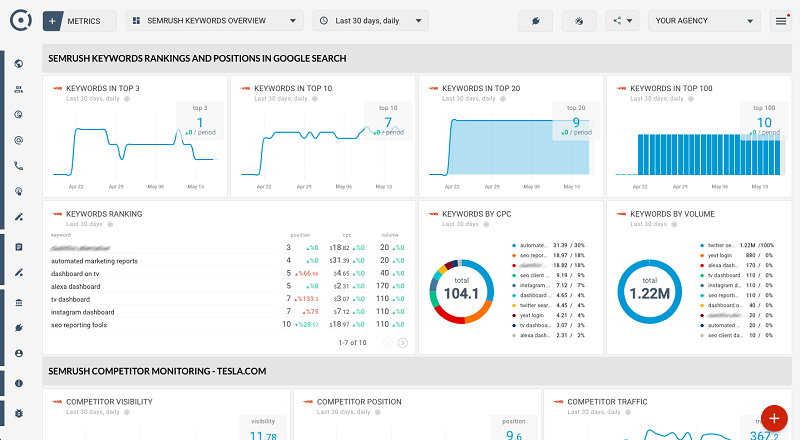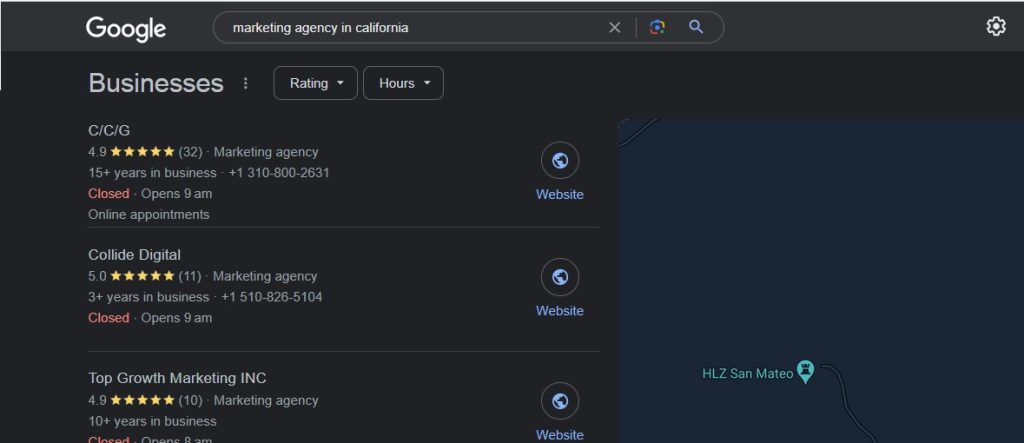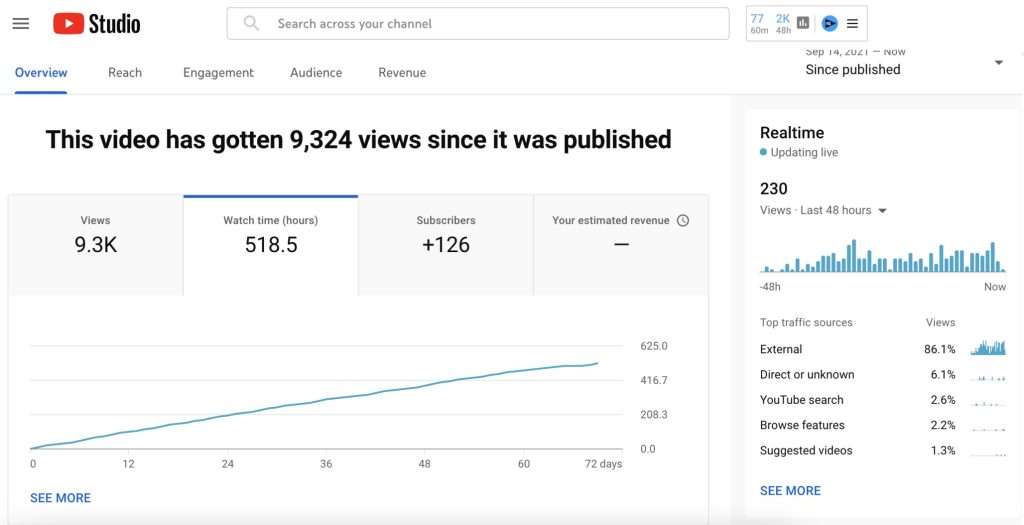Seo for ecommerce website
In today’s digital age, having a strong online presence is paramount for the success of ecommerce businesses. However, the vastness of the internet can make it challenging for ecommerce websites to stand out. This is where Search Engine Optimization (SEO) comes into play. SEO for ecommerce website is a powerful strategy that can significantly boost your online visibility, attract more customers, and ultimately drive sales. In this comprehensive guide, we’ll explore the essential elements of SEO tailored specifically for ecommerce businesses.
1. Keyword Research and Optimization
Keyword research is the foundation of any successful SEO strategy. For ecommerce websites, it’s crucial to identify the most relevant and high-converting keywords for your products. Here’s how to do it:
- Product-Centric Keywords: Focus on keywords that directly relate to your products. Use tools like Google’s Keyword Planner or SEMrush to discover popular search terms.
- Long-Tail Keywords: Long-tail keywords are specific phrases that can help you target potential customers with high purchase intent. Incorporate them into product descriptions and titles.
- Competitor Analysis: Analyze the keywords your competitors are ranking for and identify opportunities to compete effectively.

2. Optimize Product Pages
Your product pages are the heart of your ecommerce website. To optimize them for SEO:
- Unique Product Descriptions: Craft unique and compelling product descriptions that provide value and differentiate your offerings from competitors.
- High-Quality Images: Use high-resolution images with descriptive file names and alt text to improve the user experience and search engine indexing.
- Structured Data Markup: Implement structured data markup (Schema.org) to help search engines understand your product information better. This can lead to rich snippets in search results.
3. Site Speed and Mobile Optimization
User experience plays a significant role in SEO, particularly for ecommerce websites:
- Page Speed: Ensure that your website loads quickly. Use tools like Google PageSpeed Insights to identify and address speed issues.
- Mobile Friendliness: Make sure your website is fully responsive and mobile-friendly. Google gives preference to mobile-friendly websites in its rankings.
4. On-Page SEO
On-page SEO techniques are essential for ecommerce websites:
- Optimize Title Tags and Meta Descriptions: Write compelling and keyword-rich title tags and meta descriptions for each product page.
- Internal Linking: Use internal links to connect related product pages, guiding users through your site and helping search engines crawl your content more efficiently.
5. Content Marketing
Content marketing is a powerful way to boost your ecommerce SEO:
- Blog Posts: Create blog content around relevant topics, such as product guides, industry trends, and how-to articles.
- User-Generated Content: Encourage customers to leave reviews and ratings. User-generated content can provide fresh, keyword-rich content and build trust.
6. Backlinks and Outreach
While building backlinks can be challenging for ecommerce sites, it’s not impossible:
- Guest Posting: Contribute guest posts to authoritative websites in your niche, including links back to your product pages.
- Influencer Outreach: Partner with influencers in your industry to promote your products, which can result in valuable backlinks.
7. Monitor and Analyze
Regularly monitor your ecommerce website’s SEO performance:
- Google Analytics: Use Google Analytics to track website traffic, conversion rates, and user behavior.
- SEO Tools: Leverage SEO tools like Ahrefs, SEMrush, or Moz to monitor your rankings, track backlinks, and identify areas for improvement.
8. Technical SEO
Technical SEO is the backbone of your ecommerce website’s performance:
- Sitemap: Create and submit a comprehensive XML sitemap to search engines. This helps them understand the structure of your site and index it more effectively.Find getresponse and its effectiveness for ecommerce from here.
- Structured URLs: Use clean and structured URLs that include relevant keywords. Avoid using excessive parameters or symbols.
- Canonical Tags: Implement canonical tags to address duplicate content issues that often arise in ecommerce sites with multiple product variations.
- Robots.txt: Use a well-structured robots.txt file to control which parts of your site search engines can crawl and index.
9. eCommerce-Specific SEO Considerations
Ecommerce websites have unique SEO challenges:
- Product Variations: For products with multiple variations (e.g., size, color), create separate pages for each variation. This can improve the chances of ranking for long-tail keywords.
- Product Availability: Clearly indicate the availability status of products. Use structured data markup for “out of stock” and “in stock” products.
- Product Reviews: Encourage customers to leave detailed product reviews. Reviews add valuable content to your product pages and can improve click-through rates.
10. User Experience (UX) Optimization
A positive user experience is crucial for both SEO and conversion rates:
- Intuitive Navigation: Ensure that your website’s navigation is user-friendly and logical. Implement breadcrumbs for easy navigation.
- Search Functionality: Improve your site’s search functionality by using autocomplete suggestions and filters.
- Secure Checkout: Ensure that your checkout process is secure and straightforward to reduce cart abandonment rates.

11. Local SEO for Ecommerce
If you have a physical presence, optimize for local search:
- Google My Business: Claim and optimize your Google My Business listing, providing accurate business information, including location, hours, and contact details.
- Local Keywords: Use local keywords in your product descriptions and content to target users in specific geographic areas.
12. Mobile-First Strategy
As mobile users continue to grow, prioritize mobile optimization:
- Mobile-Responsive Design: Ensure your website design is responsive and user-friendly on all mobile devices.
- Mobile Page Speed: Optimize your website’s mobile page speed to provide a seamless experience for mobile users.
13. Continuous Testing and Iteration
SEO is an ongoing process, and testing is crucial for improvement:
- A/B Testing: Run A/B tests on your product pages, CTAs, and checkout process to optimize for conversions.
- SEO Audits: Regularly conduct SEO audits to identify and rectify any issues that may arise.
- Algorithm Updates: Stay updated on search engine algorithm changes and adjust your strategy accordingly.
14. Analytics and Reporting
Use data-driven insights to refine your SEO strategy:
- Conversion Tracking: Set up conversion tracking to measure the ROI of your SEO efforts.
- Analytics Dashboards: Create customized dashboards in Google Analytics to monitor key metrics that matter most to your ecommerce business.
In summary, SEO for ecommerce websites is a multifaceted endeavor that requires careful planning, ongoing optimization, and staying ahead of the competition. By implementing advanced strategies and continually refining your approach, you can achieve and maintain a strong online presence, attract more customers, and ultimately drive higher sales for your ecommerce business.
15. International SEO
If your ecommerce business operates in multiple countries or regions, consider international SEO strategies:
- Hreflang Tags: Implement hreflang tags to indicate the language and geographical targeting of your webpages to search engines.
- Country-Specific Domain or Subdomain: Depending on your international strategy, consider using country-specific domains or subdomains for different regions.
16. Voice Search Optimization
As voice search becomes increasingly prevalent, optimize your content for voice queries:
- Natural Language Keywords: Use conversational, long-tail keywords that mimic how people speak when using voice assistants like Siri or Alexa.
- FAQ Pages: Create FAQ pages that answer common questions customers might ask through voice search.
17. Video SEO
Leverage video content to enhance your SEO:
- Product Videos: Create informative product videos and optimize their titles, descriptions, and tags for search engines.
- YouTube Optimization: If you use YouTube, optimize your channel and videos for SEO. YouTube is the second-largest search engine globally.

18. User-Generated Content
Harness user-generated content to boost SEO and engagement:
- Reviews and Testimonials: Encourage customers to leave reviews and testimonials on product pages. These provide valuable content and build trust.
- Social Proof: Display social media posts or mentions from satisfied customers on your website.
19. Content Syndication
Explore content syndication to extend your reach:
- Guest Syndication: Syndicate your blog content through reputable guest blogging platforms to reach a broader audience.
- RSS Feeds: Distribute your product listings and blog content via RSS feeds to increase visibility.
20. Secure Your Website
Website security is vital for SEO and user trust:
- HTTPS: Ensure your website uses HTTPS to encrypt data transmission, and obtain an SSL certificate if you haven’t already.
- Regular Security Audits: Conduct routine security audits to identify vulnerabilities and protect customer data.
21. Rich Snippets and Schema Markup
Implement structured data and rich snippets to enhance your search listings:
- Product Markup: Use schema markup to provide detailed product information, which can lead to richer search results.
- Review Stars: Display review stars in search results to increase click-through rates.
22. User Experience (UX) Testing
Regularly test and improve your website’s user experience:
- Heatmaps: Use heatmaps to analyze how users interact with your site, identifying areas for improvement.
- User Testing: Conduct usability testing to gather direct feedback from users and refine your site accordingly.
23. Content Siloing
Organize your content into silos or categories for better SEO:
- Topic Clusters: Group related content into topic clusters, using pillar content and supporting articles to create a logical content hierarchy.
24. E-A-T (Expertise, Authoritativeness, Trustworthiness)
Google values E-A-T, so demonstrate your expertise:
- Author Bios: Include author bios on blog posts and articles to showcase the expertise of your content creators.
- Trust Signals: Display trust signals such as awards, certifications, and affiliations on your site.
25. Voice Search Optimization
Optimize your content for voice search:
- FAQs: Create FAQ sections on product pages to address common voice search queries.
- Featured Snippets: Aim to have your content appear as a featured snippet for voice searches.
These advanced strategies can take your ecommerce website’s SEO efforts to the next level. Remember that SEO is an ongoing process that requires adaptability and staying up-to-date with the latest industry trends and search engine algorithm changes. By implementing these strategies and continually refining your approach, you can establish a strong online presence, drive organic traffic, and increase conversions for your ecommerce business.
26. Personalization and AI
Implement personalization based on user behavior and preferences:
- Use AI-driven recommendations for products and content tailored to each visitor, which can increase engagement and conversions.
27. Voice Commerce
As voice-activated devices become more popular, consider voice commerce strategies:
- Enable voice-based shopping on your ecommerce site, allowing users to make purchases using voice commands.
28. Structured Data for Products
Use structured data markup specific to products to provide detailed information to search engines:
- Implement Product schema markup to include product attributes like price, availability, and reviews in search results.
29. Rich Content
Enhance your product pages with rich content:
- Incorporate videos, interactive images, and 360-degree views to provide users with a comprehensive view of your products.
30. Internationalization and Localization
For global ecommerce operations:
- Create separate versions of your website for different languages and regions to optimize for international SEO.
- Optimize for local search by including location-specific keywords and creating localized content.
31. Accelerated Mobile Pages (AMP)
Implement AMP for faster mobile page loading:
- Create AMP versions of your product pages to provide users with near-instant access to your content on mobile devices.
32. Voice Search-Friendly Content
Write content that aligns with voice search queries:
- Structure your content in a question-and-answer format, addressing common voice search questions.
33. Continuous SEO Audits
Regularly conduct SEO audits of your website:
- Use specialized SEO auditing tools to identify and address issues that may be affecting your site’s performance.
34. AI-Driven SEO Tools
Leverage AI-powered SEO tools:
- Utilize AI-driven tools that can analyze data and provide actionable insights for optimizing your ecommerce SEO.
35. User Behavior Analysis
Dig deep into user behavior:
- Analyze user data to identify patterns and make data-driven decisions to improve user experience and conversions.
36. Accelerated Mobile Pages (AMP)
Implement AMP for faster mobile page loading:
- Create AMP versions of your product pages to provide users with near-instant access to your content on mobile devices.
37. Voice Search Optimization
Write content that aligns with voice search queries:
- Structure your content in a question-and-answer format, addressing common voice search questions.
38. Continuous SEO Audits
Regularly conduct SEO audits of your website:
- Use specialized SEO auditing tools to identify and address issues that may be affecting your site’s performance.
39. AI-Driven SEO Tools
Leverage AI-powered SEO tools:
- Utilize AI-driven tools that can analyze data and provide actionable insights for optimizing your ecommerce SEO.
40. User Behavior Analysis
Dig deep into user behavior:
- Analyze user data to identify patterns and make data-driven decisions to improve user experience and conversions.
By implementing these advanced strategies and staying committed to ongoing optimization, your ecommerce website can achieve higher search engine rankings, increased organic traffic, and improved conversion rates. Keep in mind that SEO is an evolving field, and staying ahead of the curve is essential for maintaining a competitive edge in the ecommerce space.
Implementing a robust SEO strategy tailored for ecommerce websites can significantly enhance your online visibility, attract more qualified traffic, and drive sales. Remember that SEO is an ongoing process, and staying up-to-date with the latest trends and best practices is essential for sustained success in the competitive ecommerce landscape. By following the steps outlined in this guide and continuously optimizing your website, you’ll be well on your way to achieving ecommerce SEO excellence.






